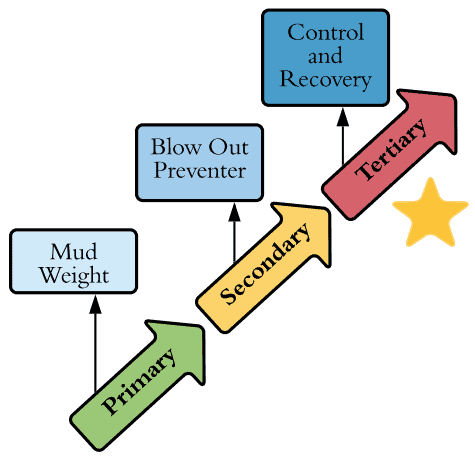There are three phases of well control. We have already covered primary and secondary well control. Now we are going to focus on the final method in the event that a kick becomes a blowout – tertiary well control. As a bit of review, primary well control involves keeping the hydrostatic pressure of the drilling mud in the wellbore in balance or slightly greater than the pressure of the formation fluids to prevent hydrocarbons from flowing into the well as a kick. When the pressure of the formation exceeds the hydrostatic pressure in the well, and a kick is detected, secondary well control involves drillers increasing the mud weight and circulating it throughout the wellbore to restore the desired balanced or overbalanced conditions, typically with the aid of engaging the BOP.
If primary and secondary well control efforts are ineffective, uncontrolled hydrocarbon flow may result in a blowout. Tertiary well control may then be instituted, encompassing several different methods the crew can take as a “last resort” option. The next few pages detail the various tertiary well control methods that can be deployed.

Image Credits
- Tertiary Well Control EE: Image Courtesy of Ila Boley